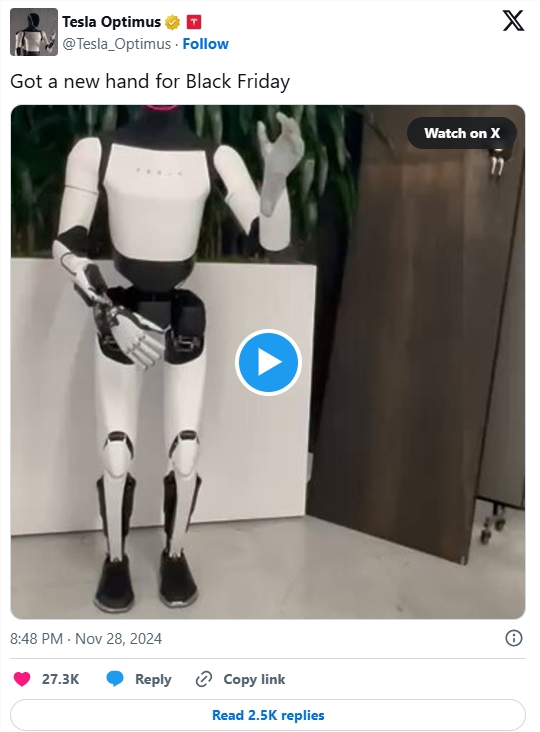Tesla’s Optimus robot made a stunning appearance again, and its superb hand operation capabilities demonstrated in the latest demonstration video are eye-catching. Being able to accurately catch a thrown tennis ball is not a simple performance, but a huge leap in robotics technology. By integrating a number of revolutionary technologies, Optimus achieves control close to the dexterity of human hands, narrowing the gap with human physiological structure. At the same time, Musk's other company Neuralink has also made significant progress. The brain-computer interface technology has obtained FDA approval for feasibility trials, opening up new possibilities for future human-machine collaboration.
On Thanksgiving Day, Tesla’s Optimus robot once again refreshed people’s imagination of robotics technology. In the latest demonstration video, the humanoid robot shows off its amazing hand manipulation capabilities and easily catches a thrown tennis ball.
This was more than a simple catch play. Optimus' novice and forearm incorporate several revolutionary technologies. The hand has 22 degrees of freedom, and the wrist and forearm have an additional 3 degrees of freedom, making its flexibility close to the 27 degrees of freedom of the human hand. This means that robots are closing the gap with human physiological structures at an alarming rate.

It is worth mentioning that this video was shot through remote real-time operation, demonstrating the precise control capabilities of the robot. The team overcame many technical challenges during the design process: how to maintain sufficient softness and tactile sensitivity while ensuring finger and palm protection.
Tactile sensing integration is another highlight. The new version offers far greater tactile coverage than previous designs, allowing for very fine control over the tendons while also successfully reducing forearm weight. These details reflect the engineers’ ultimate pursuit of robot design.
At the same time, major news came from Neuralink, another company owned by Musk. The U.S. Food and Drug Administration (FDA) has approved the CONVOY feasibility trial study, which will explore the possibility of the brain-computer interface N1 implant working in conjunction with an assistive robotic arm.
Back in July, Musk hinted that Optimus limbs might work in conjunction with Neuralink's N1 implant. Through the PRIME study, Neuralink has successfully allowed two patients to control electronic devices with just their thoughts, opening up new possibilities for human-machine collaboration.
This series of progress is not only a technological breakthrough, but also a vivid footnote that the boundary between humans and machines is increasingly blurred. Who would have thought that one day, a robot would not only be able to accurately catch the ball, but might also become an extension of human body functions? The future of technology is quietly arriving in a way that we did not expect.
From the exquisite operation of the Optimus robot to the breakthrough of Neuralink brain-computer interface technology, they all herald the acceleration of the era of human-machine integration. In the future, technology will further blur the boundaries between humans and machines, creating more amazing possibilities.